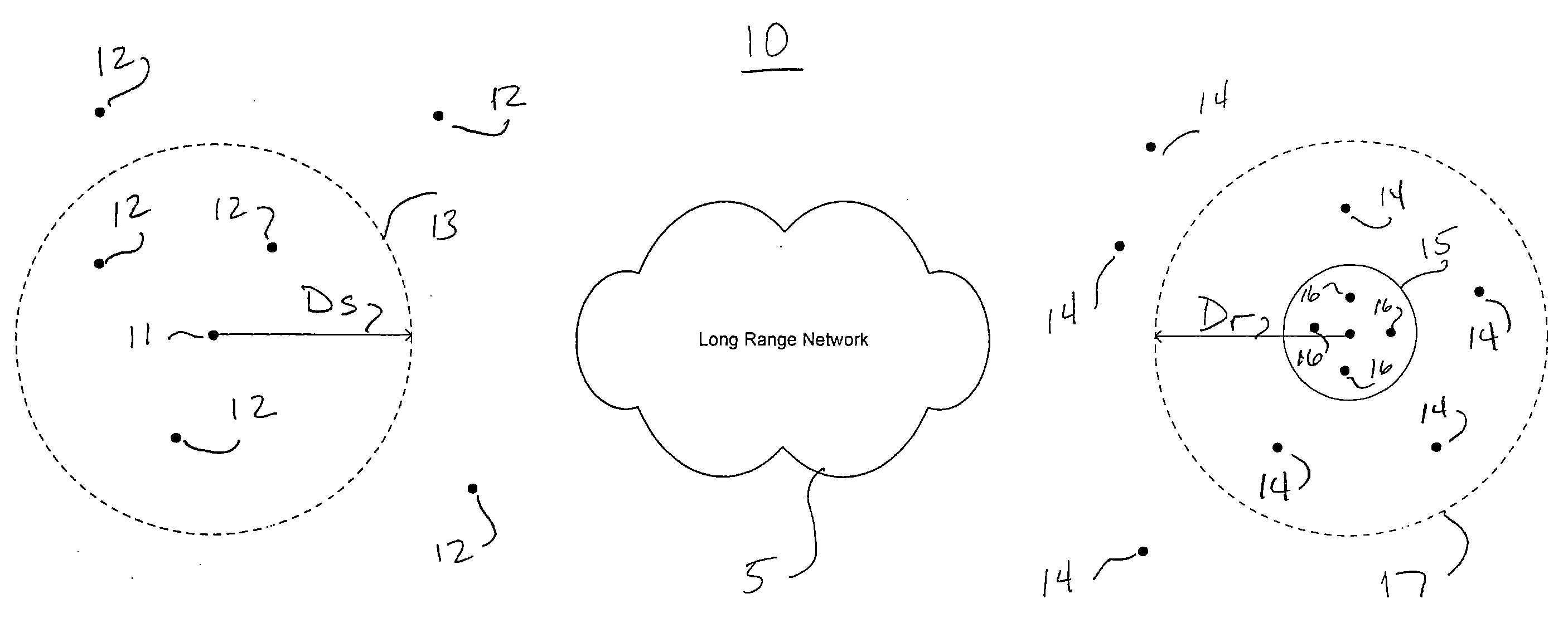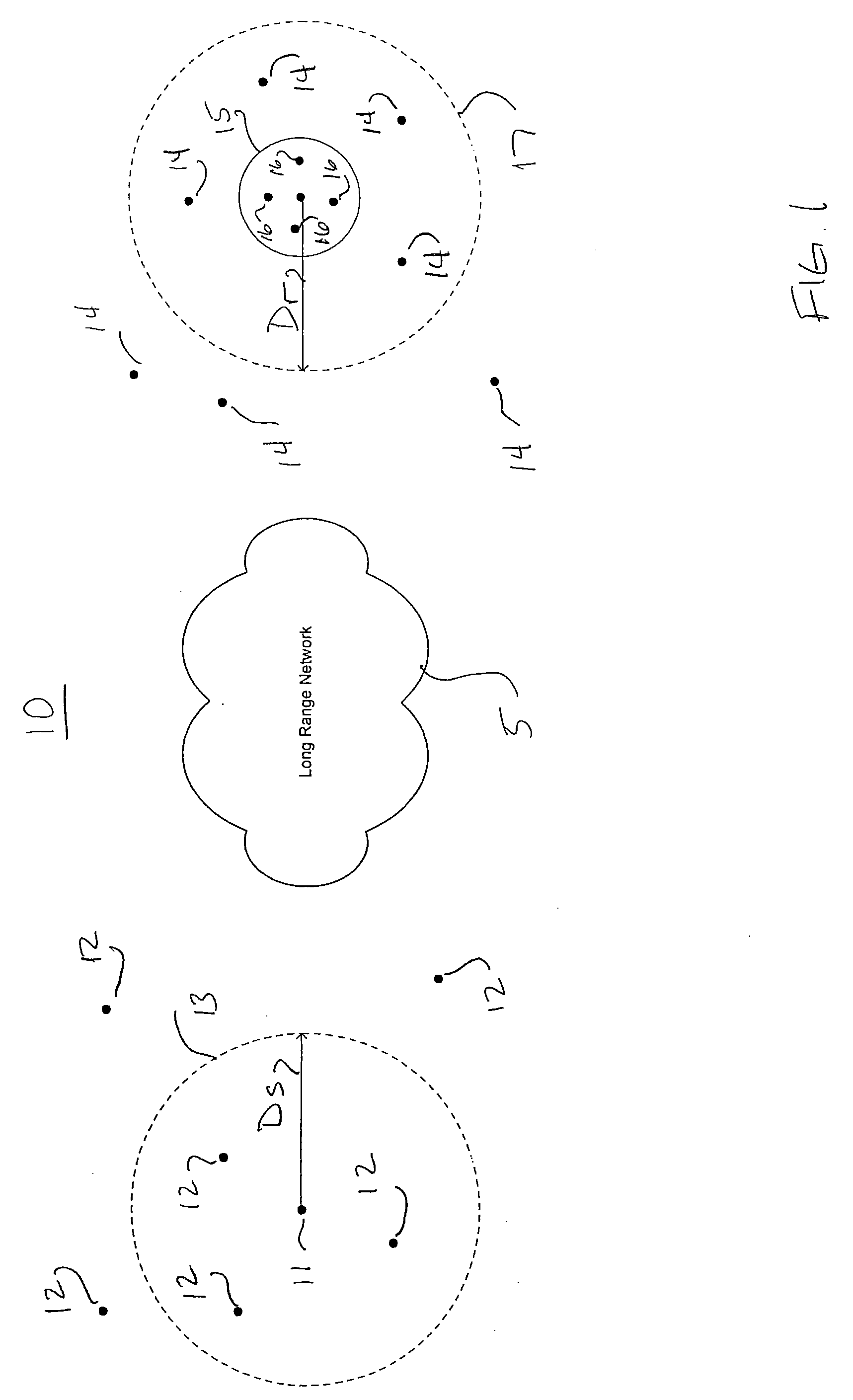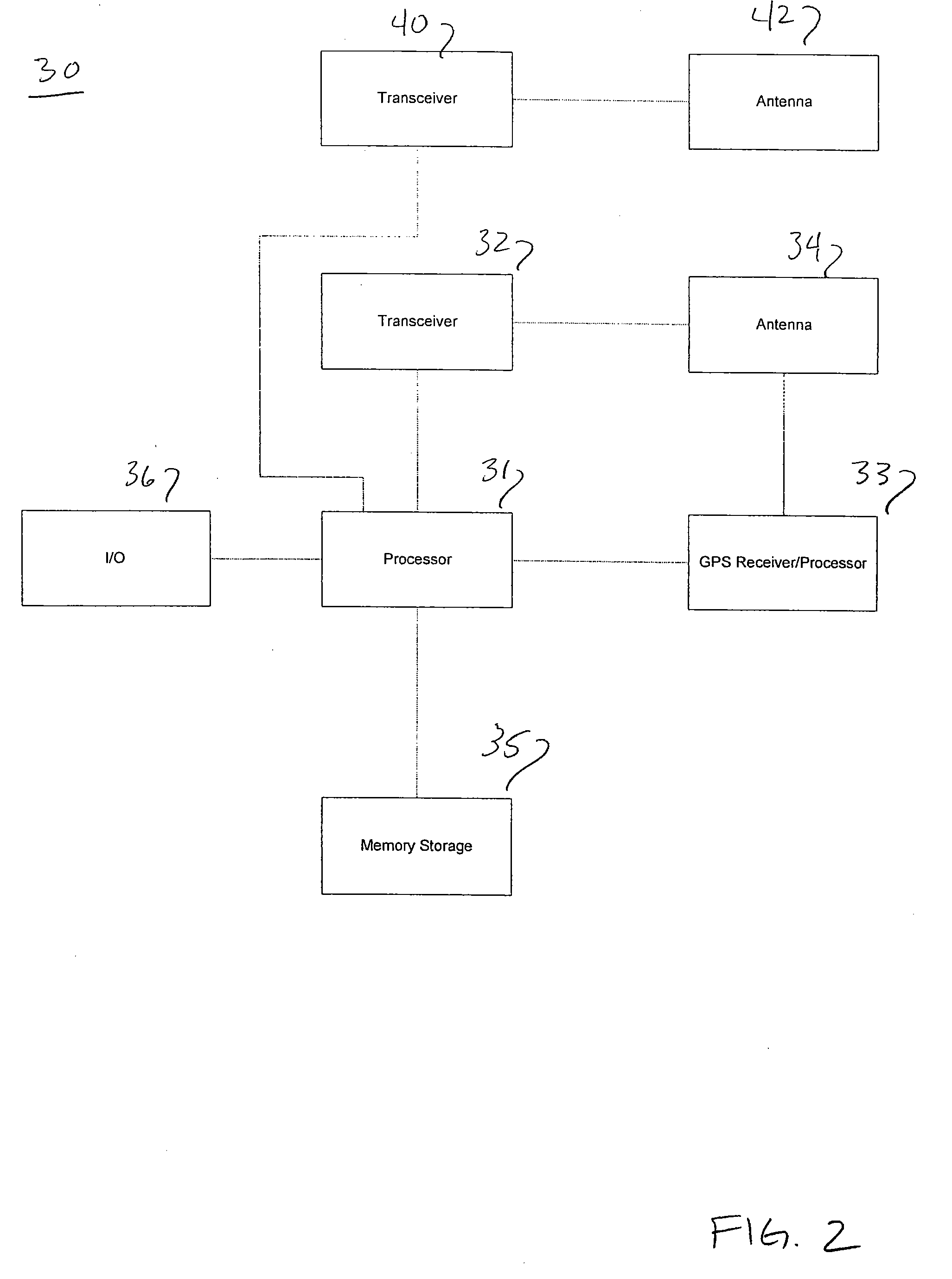System and Method for Mobile Ad Hoc Network
a mobile ad hoc network and multicasting technology, applied in the field of mobile ad hoc networks, can solve the problems of many unnecessary transmissions, inefficient applications, and inability to receive messages from intended recipients outside the range of broadcasting terminals, and achieve the effect of reducing the number of redundant transmissions
- Summary
- Abstract
- Description
- Claims
- Application Information
AI Technical Summary
Benefits of technology
Problems solved by technology
Method used
Image
Examples
Embodiment Construction
[0018]FIG. 1 shows a network 10 in accordance with an embodiment of the present invention. As shown, network 10 includes a plurality of wireless terminals 11, 12, 14 and 16 that form a MANET. Each wireless terminal 11, 12, 14 and 16 is operable to determine its own geographical location through any type of location determination system including, for example, the Global Positioning System. Each wireless terminal is operable to transmit and receive packets on the MANET. In addition, at any given time, some subset (possibly all) of the wireless terminals may be operable to transmit and receive packets over a long-range network 5. The long-rang network 5 can be any network in which packets can be transmitted from one long-range capable wireless terminal to another long-range capable wireless terminal. Many such packet networks are well known in the art including, for example, an infrastructure-based network comprising wireless base stations (for up- and down-link) operating on a separa...
PUM
 Login to View More
Login to View More Abstract
Description
Claims
Application Information
 Login to View More
Login to View More - R&D
- Intellectual Property
- Life Sciences
- Materials
- Tech Scout
- Unparalleled Data Quality
- Higher Quality Content
- 60% Fewer Hallucinations
Browse by: Latest US Patents, China's latest patents, Technical Efficacy Thesaurus, Application Domain, Technology Topic, Popular Technical Reports.
© 2025 PatSnap. All rights reserved.Legal|Privacy policy|Modern Slavery Act Transparency Statement|Sitemap|About US| Contact US: help@patsnap.com



